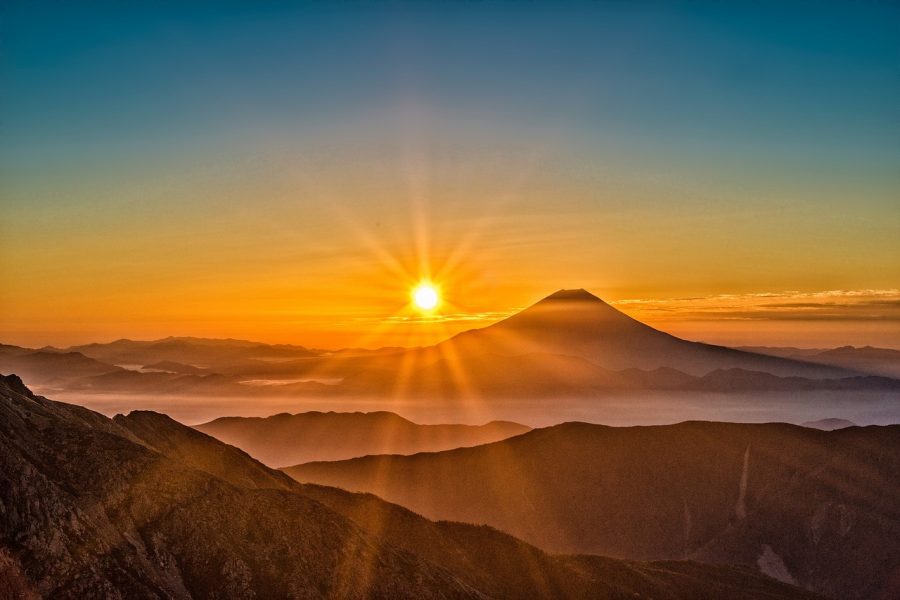Japan’s Flight to the Sun and Back! Japan’s Economic Miracle!
Japan’s Economic Miracle showed the entire world, in the late 1900s, how a nation can not only survive the hardships of a global war(WW2), but grow stronger from it. Its economy was predicted to overtake the United States, in which every power including the United States, feared its rise as a superpower. However, of course, it didn’t exactly fulfill the predictions, even though Japan would still have a strong economy.
Meiji’s Restoration
To fully understand this phenomenon, we must look to the past- when the rise of Japan really started. The Meiji’s Restoration was the turning point from being an ineffective feudal society, to the most rapidly growing imperial power, which enacted many types of reforms, transforming the entire society. When the ships from the United States came to Japan basically with the message, “open the ports or face the consequences,” they did exactly that. The apparent curse was actually a huge blessing, that would create blowback at the United States. This led to the Imperial Restoration of Emperor Kōmei, and his son Meiji, who were supported by reformist factions. When Emperor Meiji took over, the government enacted policies of military reforms, centralization, and rapid industrialization of the nation. This brought Japan onto the global stage, and it became a colonial power, conquering much of East Asia until the United States joined World War II. The United States defeated Japan in World War II and brought all of its progress down once more, as Japan was in physical and financial ruin.
Post-War and Economic Rise
We shall start with the most important period of Japan’s bounce back, the recovery that took place after World War 2(1964-1954). Many industries were destroyed, including cotton production, as two-thirds of it was scrapped and destroyed. This made the situation seem dire, but also proved how impressive Japan’s economic miracle really was. The Japanese government quickly went to work and implemented numerous types of economic reform, like Inclined Production. It focused on the production of raw materials, and the introduction of female workers which helped with the diminished workforce. During this time, the Korean War was taking place, in which the United States relied on the Japanese for military equipment and supplies, boosting its economy quite significantly. After the recovery, Japan’s growth was exponential, due to an increase in U.S support and economic reforms(1954-1972). The introduction of new governmental policies by different administrations proved to help. For example, the Ikeda administration instituted the Foreign Exchange Allocation Policy, which is a system of import controls designed to prevent the flooding of Japan’s markets by foreign goods. They also introduced trade liberalization as possible, lowered interest, and tax rates to encourage spending. The mindset of survival to recreation helped as the Japanese people did not have to worry about how they were going to survive, but what they were going to buy and sell in the future. This has made many people like Akamastu claim that Asian nations will catch up with the West, as a part of a regional hierarchy, where the production of commodity goods would continuously move from the more advanced countries to the less advanced ones. However, the increased growth wasn’t going to last, and the growth of the economy was getting slower creating stagnation(1973-1992). The first oil price shock struck Japan, which increased its oil prices exponentially causing Japan to consider a focus on other avenues for income. This, of course, made Japan focus more on technology-concentrating production forms, however, this made it have visible cracks. The final cause was the Japanese asset price bubble, which real estate and stock market prices were greatly inflated. When the bubble burst, many asset prices fell and the Japanese declined for more than a decade.
What If and Conclusion
What if Japan never stagnated, and continued that economic growth beyond what we can comprehend? In the game called, “Cyberpunk 2077,” the rise of Japan never stops, and its corporations take over the world. It has acquired various territorial possessions across the globe, and it is one of the largest economic and military superpowers in the world. It’s a very high-tech country and has almost a monopoly on the world. Japan’s influence on the world can be seen everywhere with many people adopting their culture, religion, and various business practices. With America collapsing due to experiencing its own economic crash, the American soil was ravaged by several corporations/groups including the Japanese. For example, Araska Corporation, holds much sway in Japan and across the globe. The thing that may make people start to laugh, was that America was referred to as the “Third World,” as it was mostly lawless and filled with anarchy, similar to Anarcho-Capitalism. The reason I mentioned this alternative future is that these were the fears many people across the globe had towards Japan’s rise, as many saw its rise as unstoppable. This helps illustrate the potential that Japan had and sadly didn’t live up to. As of right now, Japan’s economy is still stagnating, and its population is actually decreasing. There’s still always a chance for the Japanese people to come back to the sun. To end with a quote by Allan Peris, “If your computer speaks English, it was probably made in Japan.”











